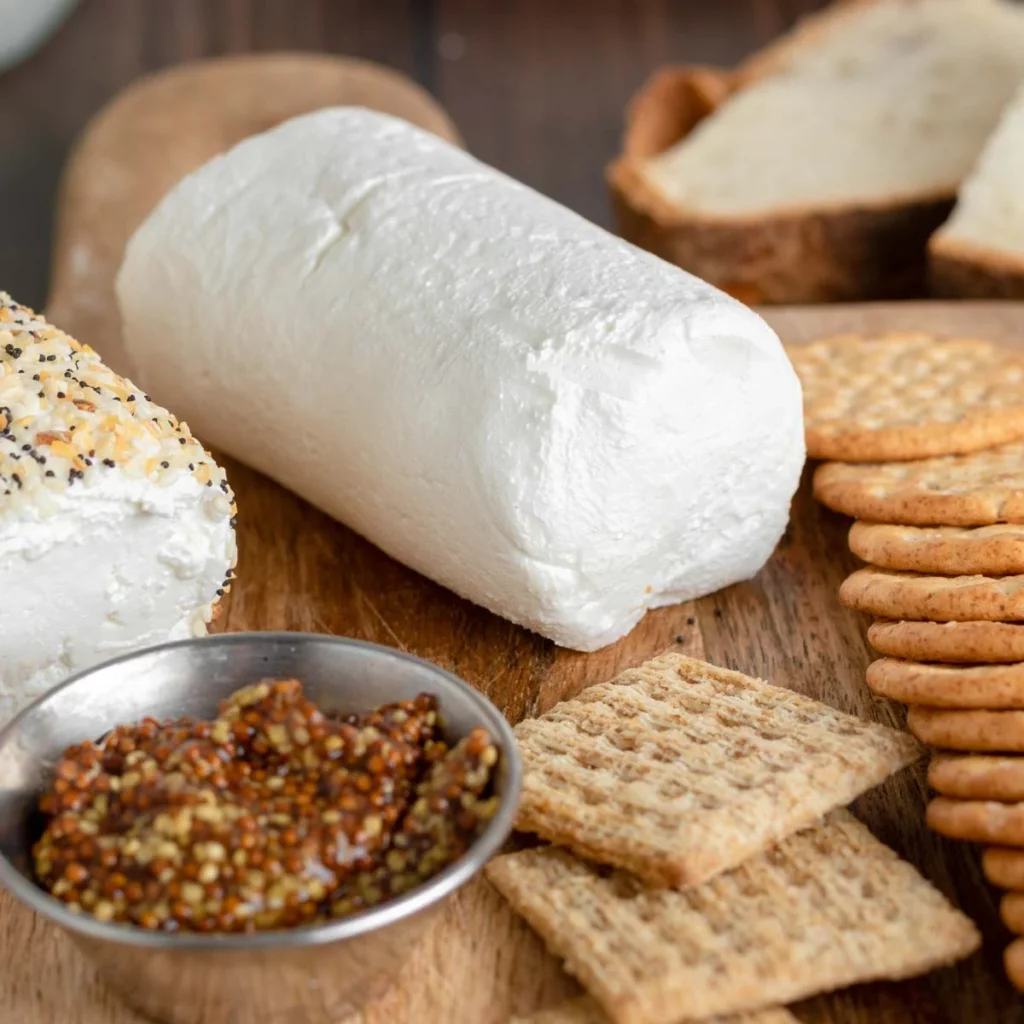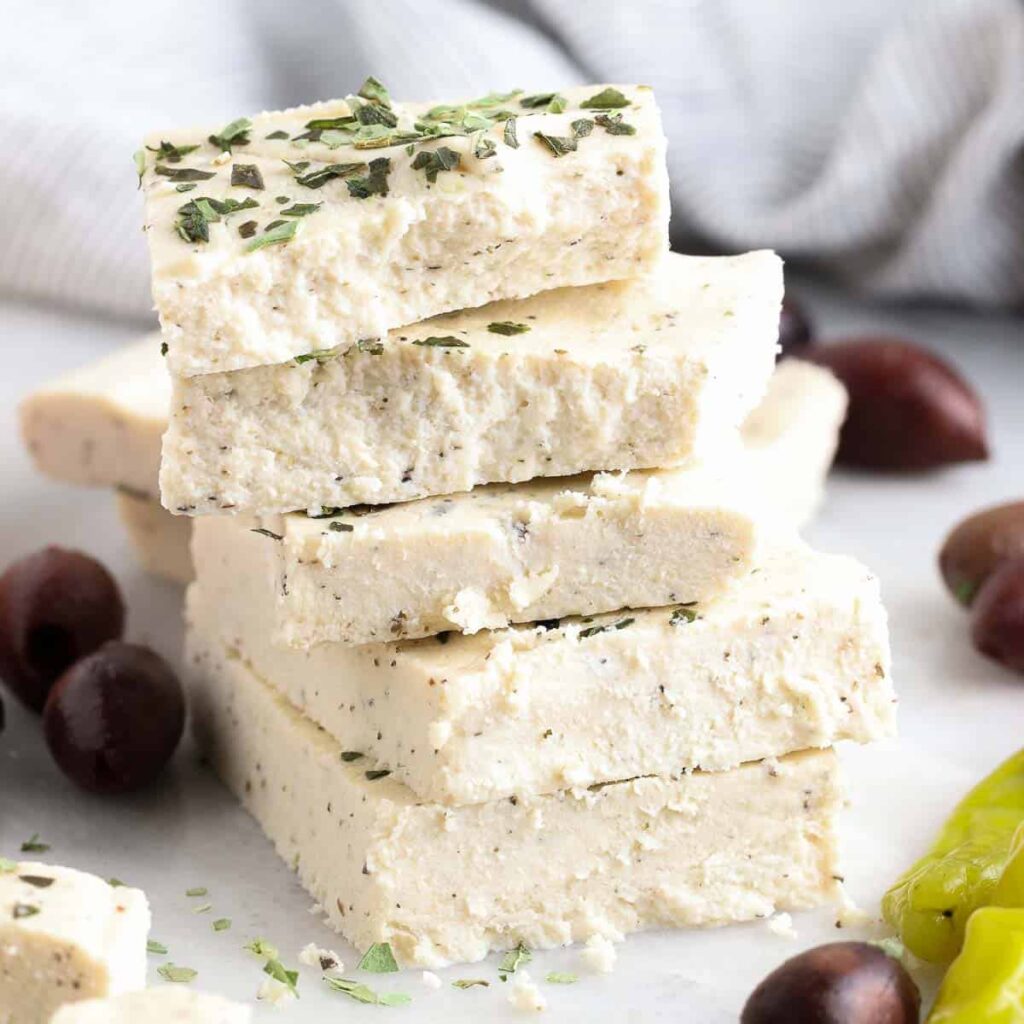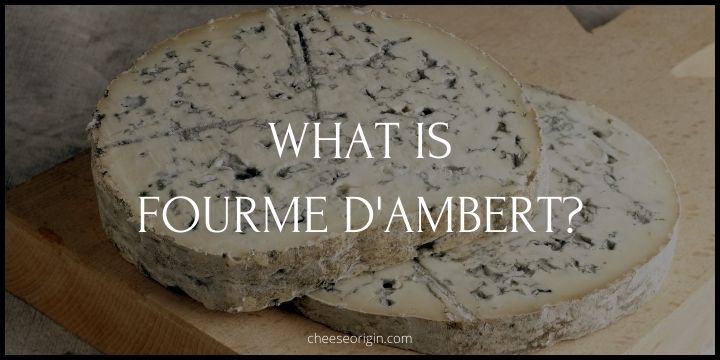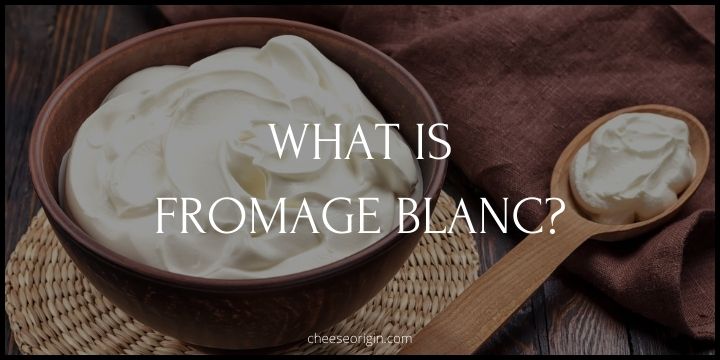What is Chèvre? The Charm of Goat Cheese Unraveled

Chèvre, the French term for goat cheese, is more than just a tangy addition to your cheese board; it represents centuries of culinary tradition, artisanal craftsmanship, and a symphony of flavors that can transform any dish from ordinary to extraordinary.
Whether you’re a seasoned cheese connoisseur or a curious foodie eager to expand your palate, this guide will take you through the ins and outs of Chèvre, its diverse variants, and how to best appreciate its unique flavor profile.
So, buckle up and get ready to dive into the fascinating world of Chèvre!
Quick Facts About Chèvre
| Chèvre Cheese Quick Facts | Description |
|---|---|
| Origin | France |
| Milk Source | Goat’s milk |
| Texture | Soft, creamy |
| Flavor | Tangy, mildly earthy |
| Color | White |
| Aging Process | Fresh to several weeks |
| Uses | Ideal for spreading on bread, crumbled in salads, or in baking |
| Production Process | The milk is curdled, drained, and often shaped into logs, pucks, or pyramids |
What is Chèvre?
Chèvre is a type of French cheese made from goat’s milk. The term ‘Chèvre’ means goat in French, so it refers to any cheese made from goat’s milk. However, in English-speaking countries, it is often used specifically to refer to a soft and creamy style of French goat cheese.
The unique flavor of Chèvre comes from the diet of the goats and can range from tangy to mildly earthy. It’s typically bright white in color due to the absence of carotene, a pigment found in cow’s milk.
Chèvre is a versatile cheese that can be used in many dishes. It’s excellent spread on bread, crumbled into salads, or used in cooking, as it melts beautifully. There are also aged versions of Chèvre, which can be firmer and develop more complex flavors.
What is the difference between Chèvre and goat cheese?
Chèvre and goat cheese are essentially the same thing. Chèvre is the French word for “goat,” and in the context of cheese, it refers specifically to cheese made from goat’s milk. In English-speaking countries, we often use the term “goat cheese” to refer to the same product.
However, there can be some subtle differences depending on the context. The term “Chèvre” is often used to refer to the traditional French style of goat cheese, which is typically soft, creamy, and tangy. These cheeses are often named after the region in France where they are produced, such as Chèvre de Provence or Chèvre de Loire.
On the other hand, “goat cheese” is a broader term that can refer to any cheese made from goat’s milk, regardless of the country of origin or specific style of cheese. This could include hard-aged goat cheeses, feta (a Greek cheese traditionally made with sheep’s milk or a mixture of sheep’s and goat’s milk), or even goat milk cheddar.
So while all Chèvre is goat cheese, not all goat cheese is Chèvre, at least in the sense of being made in the traditional French style.
Is Chèvre same as feta?
While both Chèvre and Feta are cheeses made from goat’s milk, they are not the same.
| Chèvre | Feta | |
|---|---|---|
| Origin | France | Greece |
| Milk Source | Goat’s Milk | Traditionally a blend of sheep’s and goat’s milk, but commercial versions may use cow’s milk |
| Texture | Soft, creamy, spreadable | Firm, crumbly |
| Flavor | Tangy, mildly acidic | Salty due to brining, tangy |
| Use in Cuisine | Salads, spread on bread, cooking | Greek salads, pastries, crumbled over dishes |
| Ageing Process | Usually fresh, not aged | Aged in brine |
Chèvre:

Chèvre is a type of French cheese that is soft, creamy and has a distinct tangy flavor. It’s typically fresh and spreadable, often used in salads, on bread, or in cooking to add a rich, creamy element.
Feta:

Feta, on the other hand, originates from Greece and is traditionally made from a blend of sheep’s and goat’s milk, though commercial versions may also be made entirely from cow’s milk. Feta is brined, which gives it a salty flavor and a crumbly texture. It’s often used in Greek dishes like salads and pastries.
So, while they both involve goat’s milk, Chèvre, and feta have different origins, production methods, textures, and flavor profiles.
>> Click here to read our in-depth guide on Feta
What does Chèvre taste like?
Chèvre is known for its distinct and unique flavor profile. It has a mildly tangy and slightly acidic taste, which can be described as tart. The flavor is fresh and bright, often with a hint of lemony zest. The tanginess is balanced by a rich, creamy, and smooth texture that melts in the mouth.
The taste of Chèvre can vary depending on its age and how it’s made. Younger Chèvre tends to be softer and creamier with a milder flavor, while aged Chèvre can have a firmer texture and a more intense, robust flavor.
It’s also worth noting that the flavor of Chèvre can be influenced by what the goats are fed.
For example, cheeses made from the milk of goats that graze on fresh pasture often have subtle grassy or herbal notes.
Chèvre tasting notes
- Mildly tangy and slightly acidic
- Fresh, bright flavor with a hint of lemony zest
- Rich, creamy, and smooth texture
- Younger Chèvre tends to be softer and creamier with a milder flavor
- Aged Chèvre can have a more intense, robust flavor
- Can have subtle grassy or herbal notes if the goats graze on fresh pasture
- Melts smoothly in the mouth
Why is Chèvre so good?
6 reasons why we love Chèvre:
- Flavorful: Chèvre has a unique, tangy flavor that’s fresh and bright, often with a hint of lemony zest. Its taste is quite distinct from cow’s milk cheeses.
- Creamy Texture: It has a rich, creamy, and smooth texture that melts in the mouth. This makes it perfect for spreading on bread, crackers, or blending into sauces.
- Versatile: Chèvre can be used in a wide range of dishes, from salads and pasta to baked goods and desserts. It can be eaten fresh, aged, marinated, baked, or fried.
- Healthier Option: Compared to many cheeses made from cow’s milk, goat cheese is lower in fat, calories, and lactose, while being high in protein and calcium. It’s also easier to digest for many people.
- Variety: There’s a lot of variety within the category of goat cheese. Depending on its age and preparation method, Chèvre can range from soft and spreadable to hard and crumbly, each with its own unique flavor profile.
- Sustainability: Goats have a smaller environmental footprint compared to cows. They require less space and food and produce fewer greenhouse gases.
Is Chèvre goat cheese healthy?
Yes, Chèvre, or goat cheese, is considered to be healthy for several reasons:
- Nutrient-Rich: Chèvre is a good source of protein, healthy fats, vitamins, and minerals. It contains essential nutrients like vitamin A, vitamin B, riboflavin, calcium, iron, phosphorus, magnesium, and potassium.
- Lower in Fat and Calories: Compared to many cheeses made from cow’s milk, goat cheese is lower in fat and calories. For example, a serving of Chèvre goat cheese can have around 70-108 calories, and 5.9-9 grams of fat, which is slightly less than most other cheeses.
- Lesser Lactose: Goat cheese has less lactose compared to cow’s milk cheese, making it a great option for people with lactose intolerance.
- Healthy Fats: The fatty acids found in goat’s milk have antibacterial qualities. Plus, it provides healthy fats that are beneficial for heart health.
- Anti-Inflammatory Properties: Goat cheese helps fight inflammation, which is beneficial for overall health.
- Safe During Pregnancy: When made from pasteurized milk, Chèvre is generally considered safe to eat during pregnancy.
However, like all dairy products, it’s also high in saturated fat, so it should be consumed in moderation. Also, the health benefits can vary depending on the specific type of Chèvre and how it’s made.
Chèvre nutrition facts
| Nutrient | Amount per 1 oz (28g) |
|---|---|
| Calories | 70-102 |
| Total Fat | 4.5-8g |
| Saturated Fat | Varies, included in Total Fat |
| Carbohydrates | 0-1g |
| Protein | 4-6g |
| Vitamin A | 8% of the RDI |
| Riboflavin (Vitamin B2) | 11% of the RDI |
| Calcium | Varies |
Also read: Savor the Flavor: 20 Cheeses with the Least Lactose
How do you eat Chèvre cheese?
Chèvre cheese is very versatile and can be enjoyed in a variety of ways. Here are some suggestions:
- Spread on Bread or Crackers: Fresh, soft Chèvre is perfect for spreading on bread, bagels, or crackers. It’s a delicious and simple snack or appetizer.
- In Salads: Chèvre pairs well with many salad ingredients. Try it crumbled over mixed greens with some walnuts and dried cranberries, or sliced on top of a beetroot salad.
- Baked or Grilled: You can bake or grill Chèvre until it’s warm and slightly melted. This is often done with larger Chèvre logs, and the warm cheese can be spread on crusty bread.
- In Pasta Dishes: Melt some Chèvre into your favorite pasta dishes for a creamy, tangy flavor. It goes particularly well with spinach, tomatoes, and mushrooms.
- Topping for Pizza: Use Chèvre as a topping for pizza. It pairs well with a variety of toppings like spinach, red onion, and bell peppers.
- Stuffed in Chicken or Bell Peppers: Chèvre can be used as a stuffing ingredient for chicken breasts or bell peppers before they’re cooked.
- In Desserts: Believe it or not, Chèvre can even be used in desserts. Its tangy flavor balances out the sweetness in dishes like cheesecake or fruit tarts.
- With Wine: Chèvre pairs well with a variety of wines. Try it with a crisp Sauvignon Blanc or a light Pinot Noir.
The possibilities are endless when it comes to using Chèvre in your cooking. Don’t be afraid to experiment and find your own favorite ways to enjoy this delicious cheese!
Does Chèvre goat cheese melt?
Chèvre, or goat cheese, does not melt in the same way that many cow’s milk cheeses do. While it does soften when heated, it retains its shape rather than melting into a liquid or semi-liquid state.
This characteristic makes Chèvre a good choice for dishes where you want the cheese to maintain some structure, such as in pasta dishes, on pizzas, or when used in baked dishes.
Is Chèvre easy to digest?
Yes, Chèvre is often considered easier to digest than cow’s milk cheese. This is due to several factors:
- Lower Lactose: Goat cheese contains less lactose than most cow’s milk cheeses, which can make it a better option for those who are lactose intolerant.
- Different Proteins: The proteins in goat milk are different from those in cow’s milk. Some people who have trouble digesting cow’s milk find that they can tolerate goat milk and cheeses made from goat milk.
- Smaller Fat Globules: The fat globules in goat milk are smaller than those in cow’s milk, which can make goat cheese easier to digest.
- Higher in Medium-Chain Fatty Acids: Goat cheese is higher in medium-chain fatty acids, which are typically easier for the body to break down and use for energy.
However, everyone’s digestive system is unique, so while many people find goat cheese easier to digest, others may not notice a difference or may even find it problematic.
If you’re unsure, it’s always best to consult with a healthcare provider or dietitian.
Why is goat cheese so expensive?
Chèvre tends to be more expensive than many cow’s milk cheeses due to several factors:
- Availability of Milk: Goats produce less milk compared to cows. This means it requires more goats to produce the same amount of cheese which adds to the cost.
- Seasonality: Unlike cows, goats do not produce milk year-round. The limited production period can increase the cost of goat milk and subsequently, goat cheese.
- Production Process: The process of making goat cheese can be more labor-intensive and costly, further contributing to its higher price.
- Supply and Demand: Goat cheese is often considered a specialty or gourmet item, and demand can outstrip supply, leading to higher prices.
- Quality and Variety: There are also high-quality, artisanal goat cheeses that are handcrafted in small batches, which can command higher prices.
What cheese is similar to Chèvre? 7 best Chèvre substitutes
| Chèvre Substitute | Description |
|---|---|
| Cream Cheese | Cream cheese is a great substitute due to its similar creamy and smooth texture. Its flavor is mild, which makes it versatile in different dishes. |
| Feta Cheese | Feta is crumbly like goat cheese and has a strong, tangy flavor. It can be used in salads and various dishes that require a sharp taste. |
| Labneh | Labneh is a type of strained yogurt. It’s creamy and tangy, making it a good substitute for goat cheese in many applications, especially Middle Eastern recipes. |
| Cottage Cheese | While the texture is different, cottage cheese’s mild flavor can make it a suitable substitute in some recipes. It’s best used in dishes where the texture of the cheese isn’t crucial. |
| Ricotta | Ricotta has a similar consistency to goat cheese and a mild flavor. It can work well in recipes where a smoother texture is needed. |
| Halloumi | While halloumi has a much firmer texture, it brings a unique, slightly salty flavor that can work well in many recipes that call for goat cheese, particularly when grilled. |
| Tofu (for vegans) | Tofu can be manipulated to mimic the texture of goat cheese, and with the right seasonings, it can be a good vegan alternative. It absorbs flavors well and can be used in a variety of dishes. |
What goes well with Chèvre?
Food that goes well with Chèvre
| Category | Food Pairings with Chèvre |
|---|---|
| Sweet Pairings | Nuts, Fresh fruit, Stewed fruit, Honey, Gingerbread |
| Salads and Side Dishes | Cucumber and Tomato Salad, Various Salads |
| Main Courses | Chèvre Toast with Pickled Radish and Sumac, Savory Chèvre Oatmeal with Poached Egg and Chili Crisp |
| Light Fare | Fried Goat Cheese |
| Appetizers | Crispy tarts, Creamy soups |
| Pasta Dishes | Pasta dishes with goat’s cheese |
Beverage that goes well with Chèvre
| Category | Beverage Pairings with Chèvre |
|---|---|
| White Wines | Sauvignon Blanc, Vouvray, Bacchus, Côtes de Gascogne, Rueda, Godello, Sancerre, Chardonnay |
| Red Wines | Beaujolais |
| Beers | Pilsner, Light Wheat Beer |
| Teas | Lapsang Souchong, Gyokuro |
| Non-Alcoholic Beverages | Lemonade, Hot Chocolate |
Also read: Best Wine and Cheese Pairings: The Ultimate Guide
The history of Chèvre

The history of Chèvre is deeply rooted in the agricultural traditions of France, where it has been produced for centuries.
Early Beginnings:
The production of goat cheese dates back thousands of years, possibly even predating the use of cow’s milk. In many Mediterranean countries and the Middle East, goats were domesticated before cows due to the region’s rocky and arid terrain, which was unsuitable for larger grazing animals.
Middle Ages:
By the Middle Ages, goat cheese had become particularly popular in France, especially in the Loire Valley and Poitou-Charentes regions. These areas are still renowned for their Chèvre today.
Modern Era:
In the 20th century, goat cheese began to gain popularity outside of Europe, particularly in the United States. This rise in popularity was partly due to the back-to-the-land movement of the 1960s and 1970s, as well as a growing interest in unique, artisanal foods.
Present Day:
Today, Chèvre is appreciated worldwide for its distinct flavor and versatility. It’s used in a wide variety of culinary applications, from appetizers and salads to desserts. There are also many different styles of Chèvre, ranging from fresh and creamy to aged and firm.
While the production methods and varieties of Chèvre have evolved over time, the basic process remains the same: it involves curdling the goat’s milk, draining the whey, and then shaping and aging the curds to create cheese.
Frequently Asked Questions
1. How do you pronounce Chèvre?
Chèvre is pronounced as “SHEV-ruh”. The “ch” is pronounced like “sh” in English, the “è” has a short, open sound similar to the “e” in “bed”, and the “re” at the end is pronounced like “ruh”.
2. What country is Chèvre from?
Chèvre cheese originates from France. The word “chèvre” itself is French for “goat”, and it is used to refer to any cheese made from goat’s milk. In particular, regions like the Loire Valley and Poitou-Charentes in France are renowned for their production of Chèvre cheese.
3. Is goat cheese bad for cholesterol?
Goat cheese, or Chèvre, is generally not bad for cholesterol levels. In fact, several studies and sources suggest that goat cheese may have potential benefits for cholesterol.
According to a study published by the National Center for Biotechnology Information (NCBI), consumption of polyunsaturated fatty acid-enriched goat cheese significantly increased plasma high-density lipoprotein (HDL), which is often referred to as “good” cholesterol.
However, like all cheeses, goat cheese can be high in saturated fats and should be consumed in moderation.
It’s important to note that everyone’s body responds differently to dietary changes, so it’s always a good idea to talk to a healthcare provider or a nutritionist before making significant changes to your diet.
4. How to properly store Chèvre?
Properly storing chèvre can extend its shelf life and maintain its quality. Here are some steps you can follow:
- Original Packaging: If the cheese is still in its original packaging, it’s best to keep it that way until you’re ready to use it. The packaging is designed to preserve the cheese’s freshness.
- Refrigeration: Store your goat cheese in the refrigerator. The ideal temperature for storage is between 35°F (1.6°C) and 40°F (4.4°C).
- Wrap It Up: Once opened, if you don’t plan to consume the whole cheese at once, wrap the remaining cheese in parchment or wax paper first, and then loosely in plastic wrap or put it in a resealable plastic bag. This allows the cheese to breathe while maintaining the necessary humidity.
- Avoid Cross-Contamination: Store your cheese separately from other strong-smelling foods. Cheese can easily absorb other flavors, which can alter its taste.
- Don’t Freeze: While freezing won’t necessarily harm the cheese, it can change its texture, making it more crumbly and less creamy.
Remember, fresh goat cheese is best consumed within a week or two of opening, but can technically last up to about three weeks in the fridge if stored properly.
Always check for signs of spoilage, like an off smell, mold, or a dried-out appearance, before consuming.
Also read: What’s the Best Way to Store Cheese?
5. Is Chèvre suitable for pregnant women?
Cheese made from goat’s milk, like chèvre, is generally safe for pregnant women to consume, but it depends on how the cheese is made. The key factor is whether the cheese is made from pasteurized or unpasteurized milk.
The U.S. Centers for Disease Control and Prevention (CDC) recommends that pregnant women avoid eating soft cheeses and other dairy products made from unpasteurized milk, as they can contain harmful bacteria like Listeria, which can lead to a serious infection called listeriosis. Listeriosis during pregnancy can cause miscarriage, stillbirth, premature delivery, or life-threatening infection of the newborn.
However, if the chèvre is made from pasteurized milk, it should be safe to consume during pregnancy, as the pasteurization process kills off harmful bacteria. The label on the cheese should indicate whether it’s made from pasteurized or unpasteurized milk.
Also read:
- Discovering Panela: A Guide to Mexico’s Versatile Cheese
- All About Swiss Cheese: A Comprehensive Guide
- The Tale of Taleggio: Unveiling Italy’s Pungent Treasure
- Cotswold Cheese: A Taste of England’s Finest
- The Ultimate Guide to Hoop Cheese: A Southern Delight
- Cheese Curds: The Unsung Heroes of the Dairy World
- Fior di Latte: A Comprehensive Guide to Italy’s Creamy Delight





